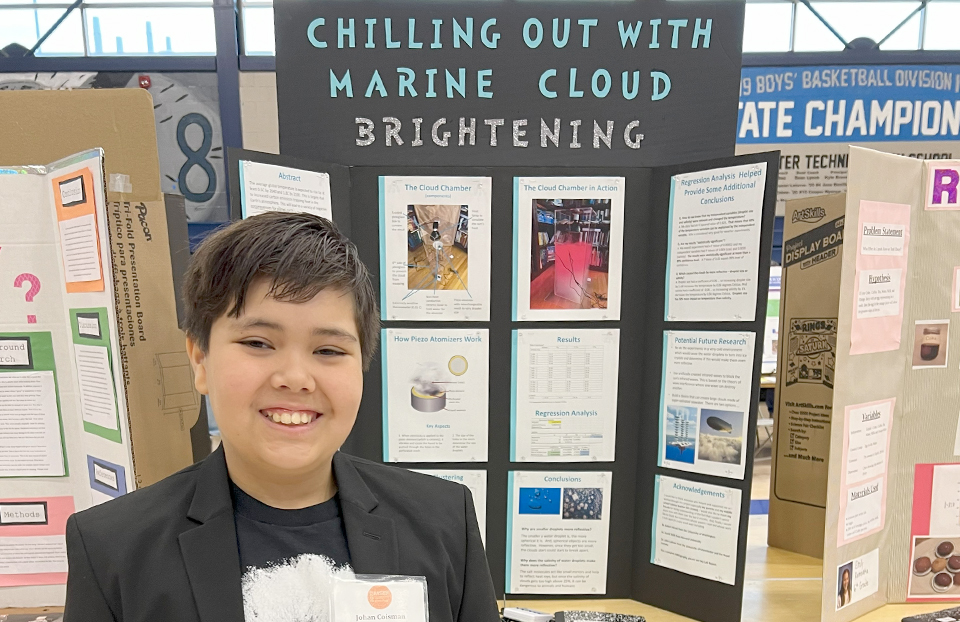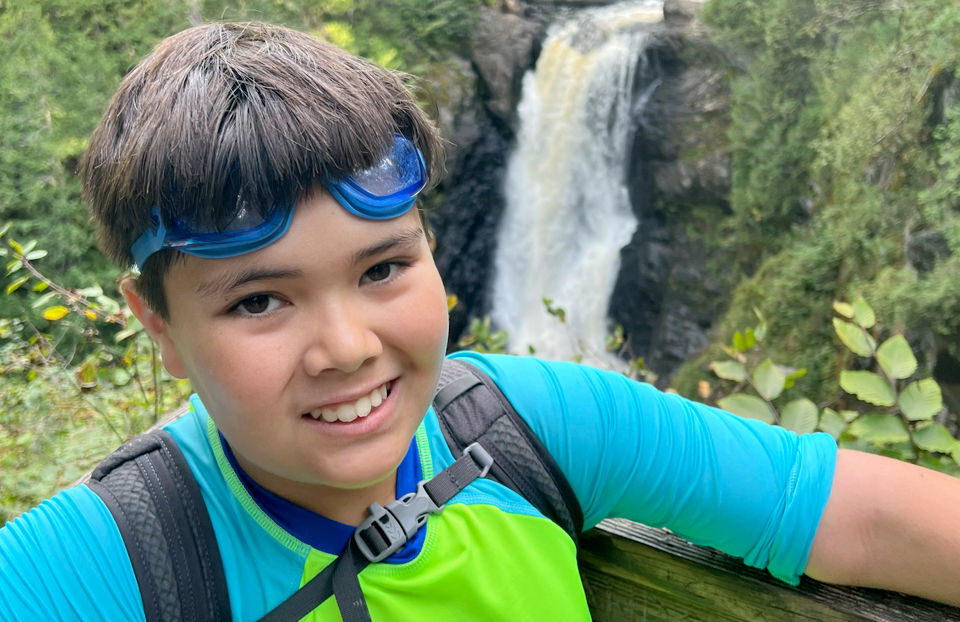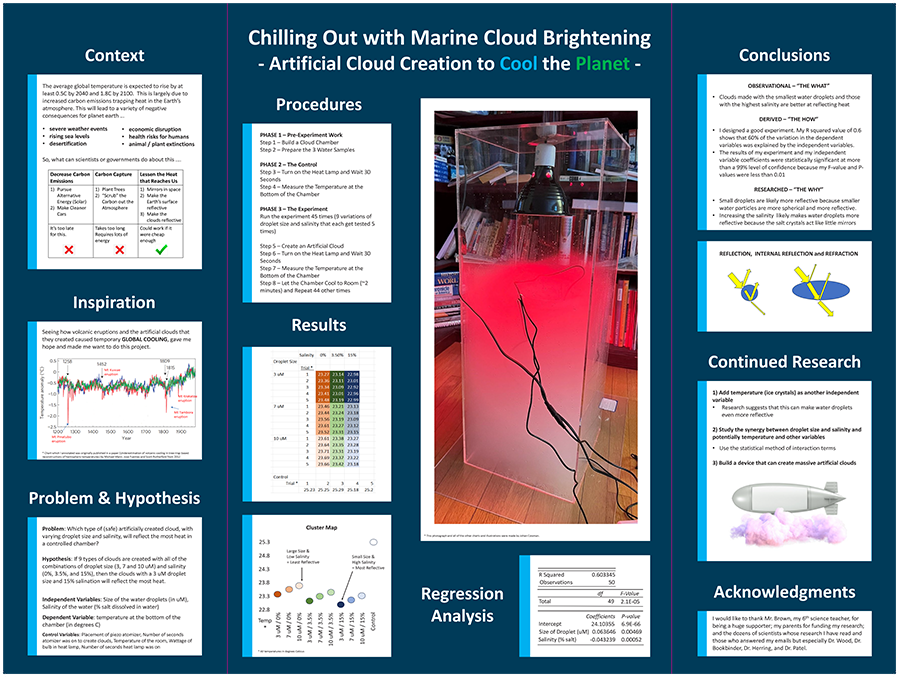Johan Coisman
6th Grade, Weston Middle School
Weston, MA
Johan explored artificial clouds as a way to combat climate change by reflecting solar radiation.
Chilling Out With Marine Cloud Brightening – Artificial Cloud Creation to Cool the Planet
View PosterProject Background
“I wanted to work on the biggest problem that I could find, even if my research would only advance science by an inch or two, so I chose global warming,” Johan says. While researching climate solutions, he found a promising technology to combat climate change called marine cloud brightening. It involves creating artificial clouds that reflect radiation from the sun to reduce Earth’s temperature. He designed and tested artificial clouds with different features to see how they could alter the temperature below.
Tactics and Results
Johan first built a plexiglass box to serve as a cloud chamber with a heat lamp at the top to simulate the sun. He generated clouds with a piezo atomizer. It uses ultrasonic vibrations to push water through mesh, turning the liquid into mist. In total, Johan created nine different types of clouds. These involved different combinations of three water droplet sizes and three salt levels. To run a trial, Johan generated a cloud and turned on the heat lamp for 22 seconds. He then recorded the temperature at the bottom of the chamber. Johan performed five trials for each cloud type and a control scenario without a cloud. Clouds with the smallest droplets, 3 micrometers, and the highest salinity, 15 percent, were the best at keeping the environment cool. With this cloud type, the bottom of the chamber’s temperature was, on average, about 73 degrees Fahrenheit, or 23 degrees Celsius. Without a cloud, the chamber was about 77 degrees Fahrenheit, or 25 degrees Celsius. Smaller water droplets are rounder than larger ones, which allows for more refraction of light, Johan says. Salinity increases reflectivity because the salt crystals act like small mirrors, he notes.

Beyond the Project
A cloud made of ice crystals might be even more reflective, Johan says. “But the thing that I most want to do is create an autonomous device that can actually make large saltwater clouds and try it on the ocean.”
Other Interests
Johan enjoys viola, soccer and participating in Boy Scouts. He hopes to continue coming up with climate solutions in the future. “There is really only one scientific career for me — climatology,” Johan says. “In this job, you can literally make the lives of every living person (actually, every person who will ever live) better.”


